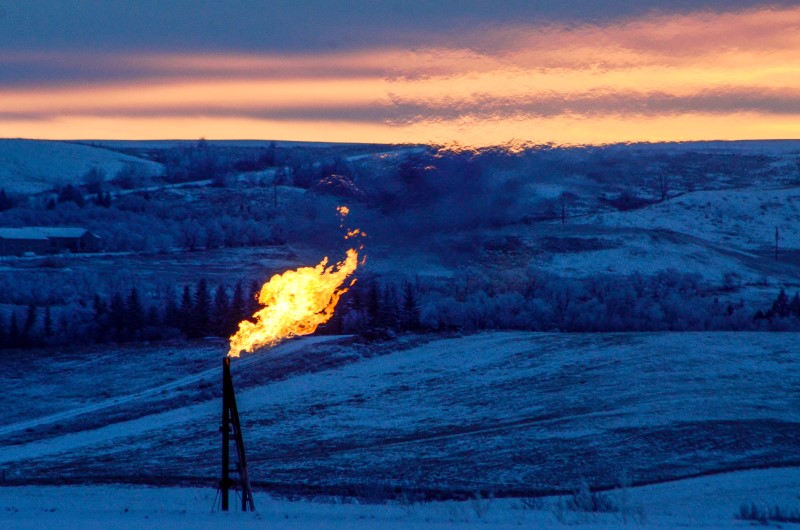Investing.com - U.S. natural gas futures declined on Tuesday, pulling back from a four-week high as a blizzard began blowing in parts of the northeastern U.S.
U.S. natural gas for April delivery shed 3.7 cents, or around 1.2% to $3.006 per million British thermal units by 9:50AM ET (13:50GMT). Prices of the heating fuel rallied to $3.089 in the prior session, the most since February 10.
The National Weather Service warned some 50 million people from Pennsylvania to Maine of a "rapidly intensifying nor'easter" that was unusual for so late in the winter. Some could expect to find themselves surrounded by up to 2 feet (60 cm) of snow by early Wednesday, the federal agency predicted.
However, New York City was expected to escape the worst of it after the NWS withdrew its blizzard warning for the city on Tuesday morning, replacing it with a mere "winter weather advisory." The service sharply reduced its snowfall forecast for the city to between 4 and 8 inches (10 and 20 cm).
The storm comes near the end of an unusually mild winter along much of the East Coast, with below-normal snowfalls in some areas, including New York City and Washington DC.
It was the warmest February on record in nearly the entire area, according to the Northeast Regional Climate Center.
Meanwhile, market participants looked ahead to weekly storage data due on Thursday, which is expected to show a draw in a range between 49 and 59 billion cubic feet in the week ended March 10.
That compares with a withdrawal of 68 billion cubic feet in the preceding week, 1 billion a year earlier and a five-year average drop of 85 billion cubic feet.
Total natural gas in storage currently stands at 2.295 trillion cubic feet, according to the U.S. Energy Information Administration, 7.7% lower than levels at this time a year ago but 15.8% above the five-year average for this time of year.
Prices of the heating fuel are down around 17% so far this year as forecasts for warm winter weather weighed on heating demand expectations.
Based on data from the National Oceanographic and Atmospheric Administration, this year’s extremely warm winter has pushed heating demand for natural gas to nearly 20% below average.
About half of U.S. homes use natural gas for heating.
Without significant demand for natural gas, inventories could stay near record levels and may even continue to pull prices even lower.
